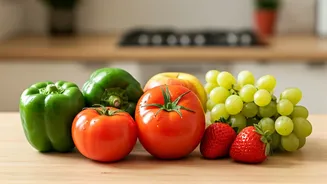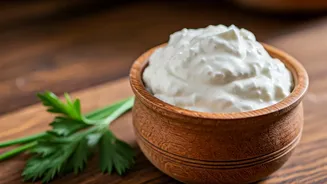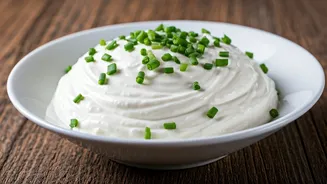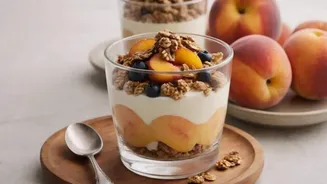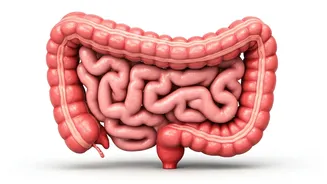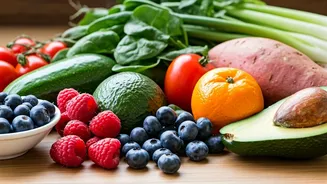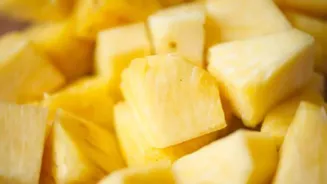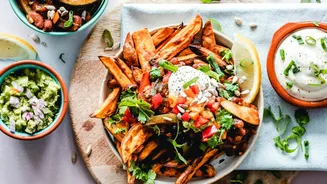Prep is Key
The initial preparation of your fruits and vegetables sets the stage for their longevity. Before you store anything, take a moment to inspect each item.
Discard any bruised, damaged, or overripe pieces, as these can hasten spoilage in the rest of the batch. Gently wash your produce, but only when you're ready to use it. Excessive washing can strip away protective coatings and accelerate decay. For leafy greens, consider a thorough wash and dry. This helps remove dirt and excess moisture, essential for preventing wilting. Proper preparation significantly impacts how long your food retains its freshness, so it's a critical first step.
Fridge Fundamentals
Your refrigerator is your primary tool in the fight against food waste. Understanding the ideal conditions for different types of produce can make a significant difference. Most fruits and vegetables thrive in the crisper drawers. These drawers are designed to maintain higher humidity levels, which helps prevent dehydration. However, not all produce benefits from the same environment. For example, leafy greens, berries, and herbs often appreciate the high humidity of the crisper drawer. On the other hand, certain fruits, such as apples and pears, can be stored in the main compartment, away from ethylene-producing fruits like bananas, which can cause them to ripen quickly. Always ensure that the refrigerator temperature is set between 35-40°F (1-4°C) to maintain the best preservation environment.
Airtight Storage
Proper storage containers are crucial for extending the life of your produce. Airtight containers or resealable bags are your best friends. They help to regulate moisture levels and prevent the absorption of odors from other foods. When storing leafy greens, consider wrapping them in paper towels before placing them in a bag or container. The paper towels absorb excess moisture, preventing wilting. For cut fruits and vegetables, store them in airtight containers. This prevents them from drying out and maintains their texture. Invest in a variety of container sizes to accommodate different types and amounts of produce. This ensures you can optimize storage for everything from a handful of berries to a large bunch of carrots.
The Ethylene Factor
Ethylene is a natural gas produced by certain fruits and vegetables that can accelerate the ripening process, often leading to faster spoilage. Understanding which foods are high in ethylene is vital for extending shelf life. Apples, bananas, avocados, and tomatoes are significant ethylene producers. These should be stored separately from ethylene-sensitive produce. Store ethylene-sensitive items like leafy greens, berries, and cucumbers away from these fruits. Consider keeping bananas outside of the refrigerator until they reach your desired ripeness. Then, transfer them to the fridge to slow down the process further. This proactive approach to ethylene management can significantly extend the life of all your produce.
Freezing for Later
Freezing is an excellent technique for extending the shelf life of fruits and vegetables beyond a week. It’s particularly useful for produce that might otherwise spoil quickly. Before freezing, blanch vegetables such as broccoli, carrots, and beans. Blanching involves briefly immersing them in boiling water, then immediately cooling them in ice water. This process helps to preserve their color, texture, and nutrients. For fruits like berries and sliced fruits, consider flash-freezing them. Place the pieces on a baking sheet lined with parchment paper, and freeze them until solid. Once frozen, transfer them to a freezer-safe bag or container. Label and date the items, and store them at 0°F (-18°C) or below for optimal preservation. Frozen produce can then be used in smoothies, soups, and various cooked dishes.
Best Practices Recap
To summarize, several key practices contribute to extending the freshness of your produce. Always inspect and prepare the fruits and vegetables immediately. Store them in the refrigerator, utilizing the crisper drawers for most produce, especially leafy greens and berries. Employ airtight containers or resealable bags to maintain optimal humidity levels and prevent odor absorption. Be mindful of ethylene production by separating high-ethylene fruits from sensitive produce. Finally, freezing is a useful strategy for long-term preservation. By integrating these strategies, you can minimize waste, eat healthier, and enjoy fresh, delicious produce for longer periods. Consistent application of these tips can lead to significant savings and a more sustainable approach to your grocery shopping and meal preparation habits.
